
8 December 2025
Both versions list current applications CADRA considers are of wider interest in our area, selected from Reading Borough Council's (RBC) and South Oxfordshire District Council's (SODC) lists.
For each application the list has the: site address, council ward, description, status, application type, a link to CADRA's comments and to the details held by Reading Borough Council (RBC) or South Oxfordshire District Council (SODC).
As an application progresses we categorise them as:
Reading Borough Council has introduced a new planning application system. From Our initial observations all applications have been migrated from the previous system, but only selected supporting documents have been transferred to the new one. Documents not transferred can still be accessed on the old system, which remains operational. New submissions for undecided applications will be added only to the new system.
It seems it is not always possible to use the new system to add comments online, so CADRA is seeking clarification from the Council about this. In the mean time we suggest you email the planning officer (firstname.lastname@reading.gov.uk) and copy it to plgadmin@reading.gov.uk.
To search the two applications register: Planning applications
24 June 2025
Gladman Developments has put forward proposals for 1200 houses and a "Vision for Land North o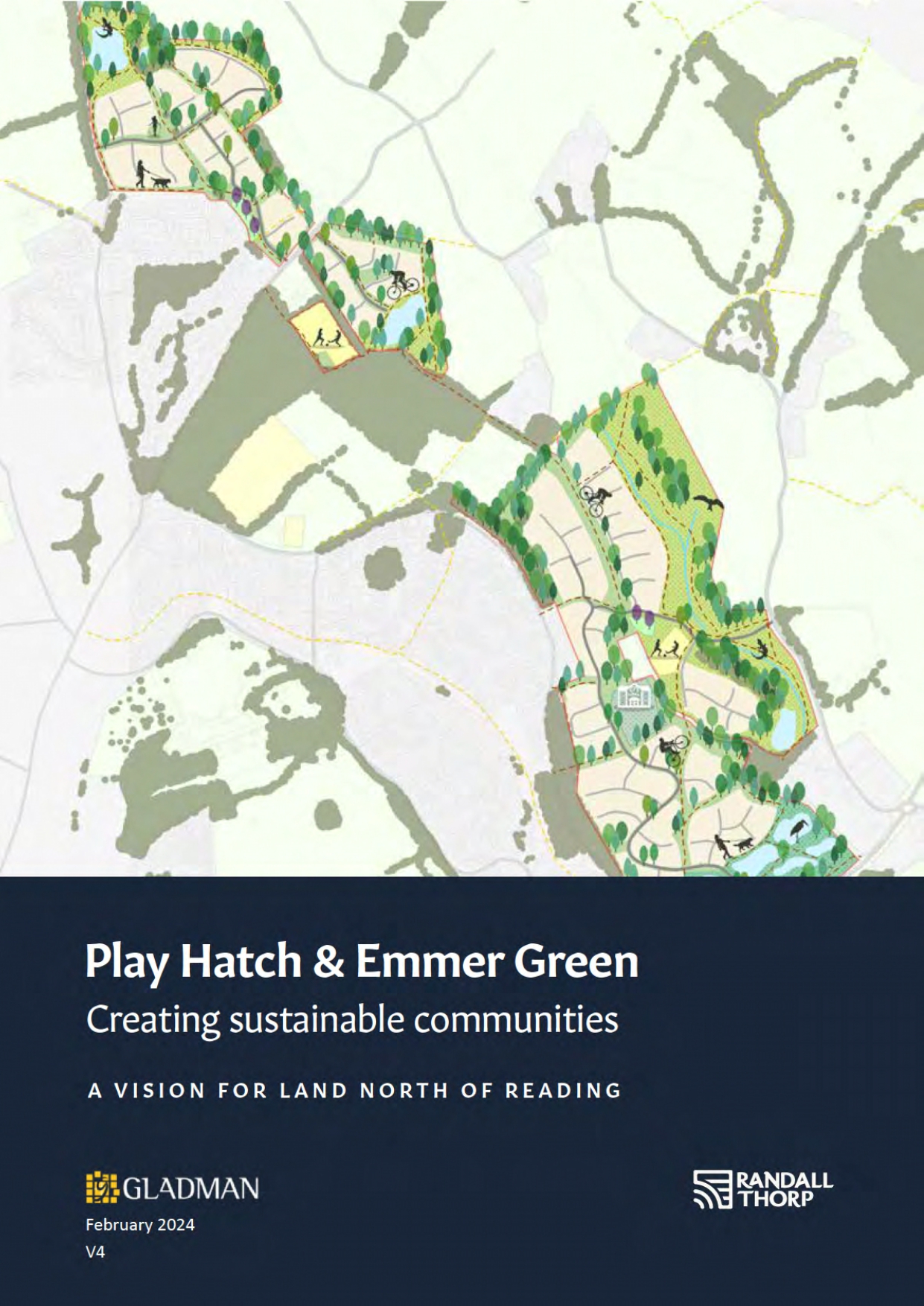 f Reading". This is seeking to influence the Local Plans for both Reading and South Oxfordshire while they are each being assessed by a Planning Inspector on behalf of the Secretary of State. Their proposals are not in line with the policies submitted by Reading or South Oxfordshire. CADRA has been monitoring the documents and we will keep you informed of any significant developments. The document is public and can be seen on the CADRA website at Gladman Playhatch Emmer Green Vision.pdf
f Reading". This is seeking to influence the Local Plans for both Reading and South Oxfordshire while they are each being assessed by a Planning Inspector on behalf of the Secretary of State. Their proposals are not in line with the policies submitted by Reading or South Oxfordshire. CADRA has been monitoring the documents and we will keep you informed of any significant developments. The document is public and can be seen on the CADRA website at Gladman Playhatch Emmer Green Vision.pdf
15 May 2025
The Council's Local Plan Partial Update (Draft November 2024) was submitted on 05 May 2025 to the Secretary of State for Housing, Communities and Local Government Housing for review and adoption. The plan will replace the current plan (November 2019), The Partial Update extends the plan to 2041. Section 8 (pages 239-247) sets out the strategy for Caversham and Emmer Green, describing the sites for development and the principles that apply.
17 December 2024
The final Consultation on the updates to the Reading Local Plan will close on 18 December before submission to the Secretary of State. CADRA has submitted its Comments.
Changes for our area are limited but Hemdean House School is now identified for education, community use or 22-34 dwellings.
Requests to reference sites in South Oxfordshire within the Reading Local Plan were not accepted, on the basis that Reading expects to meet its housing needs in full, without assistance from neighbouring authorities.
If you are interested in the detail, we have produced a paper with relevant extracts - CADRA Summary
23 May 2024
Many of the residents of these places are elderly and infirm. Building nine new houses on the site of The Brindles (application 240403) significantly increases the traffic passing along the narrow access road to existing homes, and would be a threat to current residents safety and an amenity loss. CADRA has strongly objected to the proposals, as have many residents.
.jpg) CADRA monitors local planning applications and comments on proposals of significance in our area. What that means is in our Inclusion Guidance document. We follow and contribute to local planning policy as it is developed through the Local Development Framework. We publish monthly a list of the current significant applications and their status. Latest Planning List
CADRA monitors local planning applications and comments on proposals of significance in our area. What that means is in our Inclusion Guidance document. We follow and contribute to local planning policy as it is developed through the Local Development Framework. We publish monthly a list of the current significant applications and their status. Latest Planning List
CADRA generally confines its comments to planning applications which would affect the character of the area or have a wider community impact.
If you’re concerned about other applications, and wish to comment on them, the Royal Town Planning Institute' s helpful guide How do I comment on planning applications and the Government's Plain English guide to the planning system is intended to give an overview of how the national planning system works.
If you think there has been a planning breach you can Report It for Reading Borough Council to investigate.
Reading Borough Council a Glossary of Terms used in planning applications. that may be useful.
 Reading Borough Council
Reading Borough CouncilPlanning Permission and enquiries: 0118 937 3787
The Council website provides extensive information on planning applications. Online Register
The Council provides useful Planning Information about Services. The Planning Applications Committee meets monthly.
Tel: 0303 444 5000
The Government Planning Inspectorate decides on planning applications when an applicant appeals against a refusal of planning permission.

Planning department : 01235 422600
The South Oxfordshire District Council website provides extensive information on planning applications.
The Government's National Planning Policy Framework provides a framework within which locally-prepared plans for housing and other development can be produced , and CADRA takes a keen and active interest in local plans. A central theme of the Framework is a presumption in favour of Sustainable Development.
September 2020 - The Government has proposed wide-ranging changes to the planning system.
The current Reading Local Plan, was adopted by the Council in November 2019, having been submitted to the Government Inspector for examination. It sets down the policies that will govern how the town is developed up to 2036. Whilst its focus is housing and commercial developments, it also addresses how it relates to other aspects of life in the town, including: transport, cultural development, and preserving local heritage and the natural environment.
CADRA has followed every stage of the process to develop the Reading Local Development Framework and the Reading Local Plan, submitting detailed comments and liaising with other local groups. Among other changes, this has secured the protection of many of the open spaces north of the river, through the Site and Detailed Policies Document.
The Design Code for Shopfronts has been useful when reviewing changes to Caversham centre shops.
For background information see our section on Planning Policy History.
Developers, notably Gladman, have and are likely to continue to make applications for housing in South Oxfordshire close to or on the border with Reading. So, the newly submitted South Oxfordshire Local Plan, for the period up to 2034, is perhaps of equal interest to Caversham residents as the Reading plan.
Government Inspectors have made clear they will overturn a local authority's rejection of an application which the Inspector judges to be sustainable, thereby requiring the Council to bear the costs of the appeal. Below is the National Policy Framework's definition of ‘sustainable’, which is very much an area of policy to watch.
a) an economic objective – to help build a strong, responsive and competitive economy, by ensuring that sufficient land of the right types is available in the right places and at the right time to support growth, innovation and improved productivity; and by identifying and coordinating the provision of infrastructure.
b) a social objective – to support strong, vibrant and healthy communities, by ensuring that a sufficient number and range of homes can be provided to meet the needs of present and future generations; and by fostering a well-designed and safe built environment, with accessible services and open spaces that reflect current and future needs and support communities’ health, social and cultural well-being.
c) an environmental objective – to contribute to protecting and enhancing our natural, built and historic environment; including making effective use of land, helping to improve biodiversity, using natural resources prudently, minimising waste and pollution, and mitigating and adapting to climate change, including moving to a low carbon economy.
The National Planning Policy Framework was published in March 2012 bringing significant changes to the planning process. A central theme was the presumption in favour of Sustainable Development. This meant that the new Local Plans for Reading and South Oxfordshire would have even greater significance. The background to previous local plans follow.
For a number of years Reading Borough Council has consulted the public on the detailed policy framework for managing and protecting the built and natural environment in the borough. CADRA commented at each stage of consultation.
This process reached a conclusion with the formal adoption by the Council of the Sites and Detailed Policies Document (SDPD) and Proposals Map in. These form part of the Reading Borough Local Development Framework (LDF), and replace the remaining ‘saved’ policies of the Reading Borough Local Plan (adopted 1998). They set out detailed policies for development management decisions, and identify sites for development, protection and other designations. The Proposals Map shows the SDPD designations on a map, as well as designations from other adopted plans and contextual information.
This link gives a summary of the adopted Development Plans in place for Reading: RBC Planning Policy
Copies can also be seen at the Civic Offices and at Reading Libraries.
A similar process was completed by South Oxfordshire District Council (SODC), where five years was spent preparing and consulting on a Core Strategy. South Oxfordshire District Council formally adopted the South Oxfordshire Core Strategy 2027 Development Plan Document in December 2012: SODC The Core Strategy
In preparing the Core Strategy one option, Option F, was to locate 6,000 homes on the outskirts of Oxford and Reading. This was rejected.
Historic England Lists buildings for their special architectural or historical interest. A building may be listed because of age, rarity, architectural merit or the method of construction. Listing aims to ensure that the architectural and historic interest of a building is preserved within present day uses. Buildings are graded to show their relative architectural or historic interest:
Grade I - Buildings of exceptional interest
Grade II* - Particularly important buildings of more than special interest
Grade II - Nationally important and of special interest.
There is information about locally listed buildings in Locally Listed Buildings.
Any work to demolish, alter, extend or in any other way affect the building requires Listed Building Consent from Reading Borough Council. Works which affect the character are likely to include: alterations to structural fabric of a building such as roofs, floors, walls, stairs and fireplaces and modifications of windows, doors and mouldings. The procedure is similar to obtaining planning permission.
An application for Planning Permission is often necessary alongside an application for listed building consent. For clarification of how to apply for Listed Building Consent, and to find out whether planning Permission is required contact Reading Borough Council Planning Department.
Redevelopment of a site containing a listed building requires Listed Building Consent for the demolition and Planning Permission for the new building.
There is a very fine line between the repair and maintenance of a listed building and alterations that would require Listed Building Consent. The loss of original materials and features during the maintenance of a listed building can lead to a loss of architectural and historical value of the building. Any removal of original materials and the replacement with modern alternatives is likely to require Listed Building Consent. Consolidation and repair is more appropriate than the wholesale replacement of materials and features. The Planning Department will give advice.
You can view information on listed buildings on the RBC website: Conservation areas & listed buildings.
This section was prepared following residents' concerns about planning applications for new and replacement telecom masts that are required for the rollout of 5G mobile phones.
In 2024, a new 5G mast was erected without any obvious public notification. Residents nearby were very concerned because it was much higher and dominant than the one it replaced. At 25m it was taller and thicker than all the previous applications for new 15m masts which were refused.
CADRA contacted RBC Planning's Enforcement, who investigated. The outcome was that the replacement mast was permitted under the terms of the Permitted Developement Rights (PDR) regulations. As a result of CADRA's inquiry, we are now seeing PDR applications for replacement masts on RBC's Planning Register, as well as those for new ones.
Whilst residents now have an opportunity to object, using grounds that were successful for new masts, such as the negative impact on the street scene (see next section), these are less likely to succeed, given there is a mast in place already.
Around 2023-24, many planning applications were made for 5G masts, across Reading, ranging from 15 to 20 metres high. Many were refused by RBC. Several appeals dismissed, with one Inspector writing that:
The main issue in the appeal is the effect of the siting and appearance of the proposed development on the character and appearance of the locality, and if any harm would occur, whether this is outweighed by the need for the installation to be sited as proposed taking into account any suitable alternatives.
Given the local interest, we compiled a Summary of the Main Issues to consider for each application, and a list of some 5G Mast Planning Applications North of the River, which include links to the full application details.
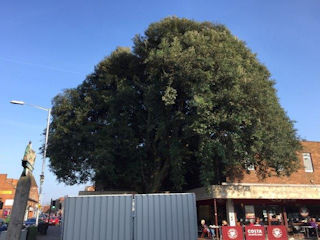 Using Town & Country Planning legislation, local planning authorities are able to protect trees of amenity value by way of a Tree Preservation Order, commonly referred to as a "TPO". This is particularly important when specimen trees are under threat of inappropriate work, damage or felling. TPOs are highly significant in determining planning applications. Planning Officers can apply provisional TPOs to sites where a planning application is under consideration. The Natural Environment Team in the Planning Department deals with trees.
Using Town & Country Planning legislation, local planning authorities are able to protect trees of amenity value by way of a Tree Preservation Order, commonly referred to as a "TPO". This is particularly important when specimen trees are under threat of inappropriate work, damage or felling. TPOs are highly significant in determining planning applications. Planning Officers can apply provisional TPOs to sites where a planning application is under consideration. The Natural Environment Team in the Planning Department deals with trees.
The owner of a protected tree remains responsible for its maintenance and for any damage they may cause. To undertake work to a protected tree an application must be made in writing to the Natural Environment Team in the Council's Planning Section, who will make a visit and write back with its decision.
Carrying out work on a protected tree without permission is an offence and can lead to a fine.
On Reading Borugh Council’s website you can view a Guide to TPOs, a full list of TPOs listed alphabetically by street, and the Council's Tree Strategy: RBC Trees
From 1 October 2008 the permitted development rights that allowed householders to pave their front garden with hardstanding without planning permission were changed in order to reduce the impact on flooding and pollution of watercourses.
You do not need planning permission if a new or replacement driveway of any size uses permeable (or porous) surfacing, such as gravel, permeable concrete block paving or porous asphalt, or if the rainwater is directed to a lawn or border to drain naturally. If the surface to be covered is more than five square metres planning permission will be needed for laying traditional, impermeable driveways that do not provide for the water to run to a permeable area.
More detailed guidance on paving your front garden can be found on the Planning Portal.
In 2014, at a CADRA AGM, Prof. Gavin Parker from the University of Reading presented an Outline of Planning and Neighbourhood Planning: Gavin-Parker Presentation
Hermes the owners of St Martins Centre are preparing alternative plans for the position of the new cinema. The intention is to develop above and behind the Superdrug store which would be retained with some alterations. The proposed building may rise to 5 storeys with the upper levels set back. The entrance to the cinema would be from the new Caversham Square on the car park side. The entrance to the new residential accommodation on the upper floors would be from Church Street.
The proposals for Caversham square with the cinema entrance and a new rear entrance to Waitrose suggest a positive external space. It will be important that the building line and the detailed design of the Church Street frontage is sympathetic and not over dominant and that the height and bulk of any new building are carefully considered. A formal planning application is expected next year.
Now that that the refurbishment of St Martin’s Square is virtually complete, it is expected that work will follow on for the new 5 storey block for a restaurant and flats above, adjacent to Marc Antoni Hairdresser, where permission has already been granted. The work for the cinema and Superdrug could follow on.
Hermes submitted two new applications (180671 - 180499), which included a change to the phasing of the development and a cinema or leisure facility above the Super Drug shop. CADRA commented on the 180499 application.
Hermes made a minor application detailing how they would carry-out part of the development for Block 1A, the new block at the western end of the development, currently a private car park for the shops.
It was announced that Waitrose was no longer progressing plans to extend its Caversham store as part of the proposal to redevelop St Martin’s Centre. Following the withdrawal of Waitrose, Hermes applied for permission to carry out the work in phases. The attached plan shows the sequence requested.
The application for the redevelopment of the St. Martins Precinct was eventually approved on 31 March 2015 . The scheme included upgrading the precinct, which will link to a new public square - Caversham Square - and a larger Waitrose, a total of 40 flats, a cinema and improvements to the parking area. CADRA welcomed the regeneration and the new facilities, whilst expressing concerns about the effect on Church Street of some aspects of the design, especially the Pizza Express building, and the cut-back of the Holm Oak outside Costa.
The application was considered at the November 2014 Planning Applications Committee. Planning Officers made a guarded recommendation for approval and CADRA outlined a number of concerns. The view that this was a ‘once in a generation’ opportunity to get this right for Caversham was endorsed by Councillors. The applicant requested a deferral to allow differences on financial contributions to be resolved. The committee asked the applicant to address the concerns raised during the deferral period. Some very minor changes had been made and background discussions with the Council continued.
Further modifications were made to the plans. However, the issue of trees on the Church Street frontage remained a major concern, particularly the landmark 150 year old, evergreen Holm Oak. The upward extension planned above Boots and Costa would occupy much of the space of the Holm Oak canopy. To erect scaffolding, construct the new apartments and give some light to their windows, the major part of the canopy would have to be removed. These photographs illustrate the extent of the planned overlap between the existing tree canopy and the proposed building.
Street view Church street
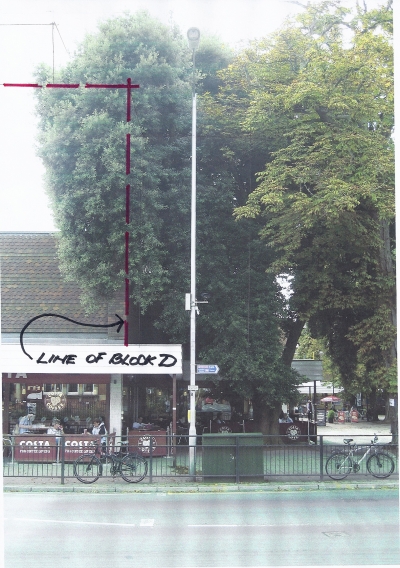
Holm Oak - Block D clash
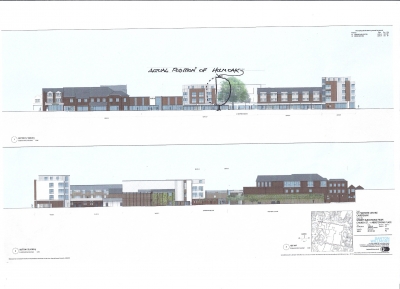
Holm Oak actual position
Similarly, the canopy of the new block including Pizza Express would occupy the space of the two street trees towards the telephone exchange which are now progressing well as mature trees.
While many of the modifications were welcomed, trees on the Church Street frontage would be critical to soften the impact of the larger modern buildings. The CADRA response to the revised plans can be seen at: CADRA response.
Following a range of concerns raised over the initial plans, revised plans were submitted , as shown here.
Comments on the original application and applicants response
Masterplan - proposed consolidation site plan
Street elevations from Church Street
Street elevations from the rear car parks
3D Street view - Church Street frontage (Pizza Express)
3D Street view - Church Street frontage (Costa and precinct)
3D Street view - Church Street frontage (Waitrose)
The original planning application for St Martin's Centre (No. 140997) was submitted in June 2014.
The Masterplan section gave a quick overview of the scheme, showing 3 different views along Church Street 05,06,07
The Landscape Plan showed the overall layout with details of trees and proposed surfaces.
Major changes were shown in:
Block A - the new 5 storey block adjacent to the telephone exchange
Block D - new residential provision above Boots and Costa, making 4 storeys
Block E - the extended Waitrose store and the decked car park.
CADRA sent a preliminary response to the application, drawing on the many comments received, which followed the CADRA response to the pre-application consultation.
This document sets out CADRA’s vision for the area.
In October 2016, Gladman Developments Ltd, acting 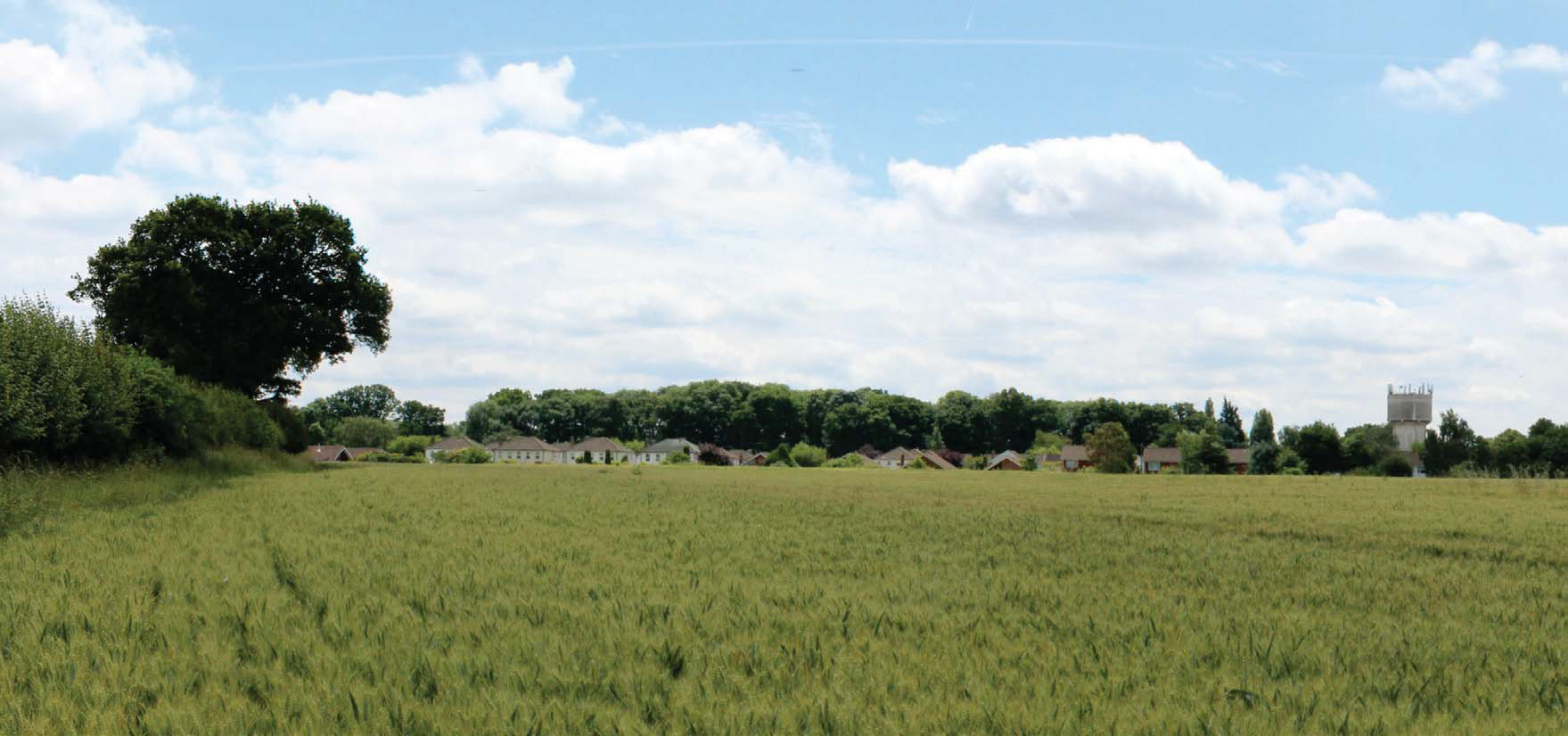 on behalf of the land owner, submitted a planning application to South Oxfordshire District Council (SODC), to build 245 houses on farmland next to the Peppard Rd, on the boundary with Reading (Application No. P16/S3630/O). It wasn't until April 2019, that Gladman finally admitted there was no longer a way to pursue this application. This successful outcome for local residents, is a remarkable story of how well local community groups and parish councils can work closely together. How important the hard work of individuals is and that within a community there are often people with very useful specialist knowledge. CADRA is very proud to have beeen part of this campaign. The key events in this story are as follows.
on behalf of the land owner, submitted a planning application to South Oxfordshire District Council (SODC), to build 245 houses on farmland next to the Peppard Rd, on the boundary with Reading (Application No. P16/S3630/O). It wasn't until April 2019, that Gladman finally admitted there was no longer a way to pursue this application. This successful outcome for local residents, is a remarkable story of how well local community groups and parish councils can work closely together. How important the hard work of individuals is and that within a community there are often people with very useful specialist knowledge. CADRA is very proud to have beeen part of this campaign. The key events in this story are as follows.
Along with CADRA's Objections to Gladman's application, there were also those from other groups and many individuals.
Although SODC had been expected to recommend refusal of this application, the planning officer finally recommended approval. Following substantial opposition from Parish Councils and individuals in South Oxfordshire, Caversham and Emmer Green, the Planning Committee decided to refuse the application. Gladman then submitted an appeal to the Government Planning Inspectorate.
Reading Borough Council confirmed they would support SODC in defending their decision, at the appeal, because of the inadequacy of infrastructure and services (RBC Statement).
The Gladman Inquiry opened Tuesday 1 May and heard evidence on landscape and transport from interested parties including CADRA, who strongly objected to the development (Our statement). Paul Matthews did an excellent job as professional transport witness and prepared a very detailed Statement. The remainder of the inquiry was deferred until August 29th. This was because SODC's original Statement did not include the housing land supply for 5.4 years, which was only available shortly before the inquiry. A significant part of Gladman's case was the absence of a 5.4 year land supply, which SODC could now demonstrate.
During the final stage of inquiry (August 2018), Paul Matthews again gave expert transport evidence. CADRA worked with the other members of the campaign group (CAGE) in all the build-up, made two statements and were represented throughout the appeal.
Thanks to the financial support from organisations and individuals, CAGE was able to engage a barrister. His contribution was very important and his closing statement to the appeal and other statements can be read here:
Traffic and transport statement
South Oxfordshire District Council statement
Reading Borough Council Statement
The dismissal (November 2018) of the appeal by the Government inspector was tremendous news and great credit to all the community groups, including CADRA, which fought the case. The inspector focused on issues of housing numbers, the Local Plan and landscape impact in reaching his decision (Inspector's Decision Notice). However, Gladman decided to challenge that decision in the High Court.
In February 2019, Gladman's request to challenge, at a High Court hearing, the process by which the Planning Inspector reached his decision was refused. They were however granted an oral hearing before a judge.
On the 27th March at the oral hearing, Gladman was again unsuccessful in seeking permission for a court hearing. They made no approach to the Court of Appeal within the seven days allowed, and so that was the end of the road for this particular application.
Had the planning application been successful, the development would have been the first on the Reading-South Oxfordshire border and could have set a precedent for similar developments.
These are comments CADRA submited on RBC and SODC Local Plans
SODC Comments Examination Jun 2020
RBC Comments on main modifications to Local Plan July 19
